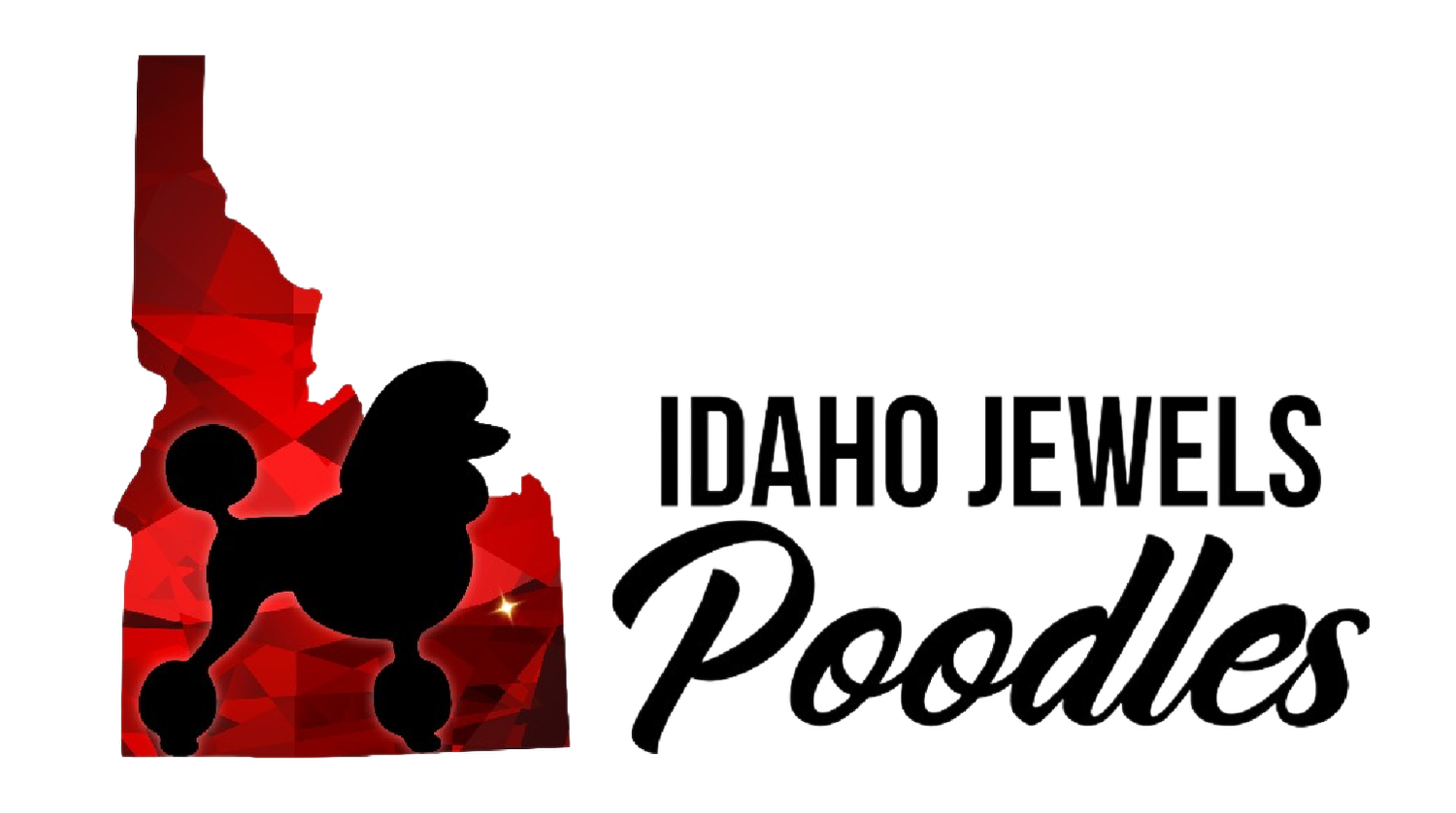About the Poodle Breed
The poodle is exceptionally smart, active and excels in obedience training. An outgoing breed, the three Poodle sizes have been used to work with humans in various capacities, including as a water retriever, truffle hunting and performances in circuses, where their friendly nature has been a plus. The breed comes in three size varieties, which may contribute to why Poodle is currently the 8th most popular breeds according to AKC® Registration statistics. The varieties Standard, Miniature, and Toy are used to describe size only. All the Poodles are one breed, governed by the same standard.
Poodle Sizes
-

Toy Poodles
Under 10” at the tallest point of the shoulders.
Toy Poodles are the most desirable puppies that we produce at Idaho Jewels Poodles, and generally find their homes the quickest amongst the other sizes we produce. Their small size makes them perfect to take anywhere.
There are “slang” terms that breeders and lovers of Poodles typically use to further classify the various Toy Poodle sizes.
”Tiny Toys” = 4-6 lbs
”Teacups” = 3-4 lbs
While these size categories aren’t recognized by the Poodle Club of America/AKC, we do try to include this terminology for those looking for an extra small furry family member.
We generally produce Reds (Solid & Sometimes Abstract) within this size, while Phantoms and Other Colors are more of a rare case for our program. -

Miniature Poodles
Between 10” and 15” at the tallest point of the shoulders.
Miniature Poodles are generally the most popular puppies that we produce for their versatile size. They’re just small enough to tote around, but also big enough to roughhouse and play around with!Miniatures and Toys often find a lot of sizing overlap within their pedigrees. That is to say that Miniatures can produce Toys and vice versa. We love the versatility of what they are able to produce for our prospective puppy parents.
We generally produce Reds (Solid, Abstract, & Parti), Phantoms (Solid, Abstract, & Parti) within this size. The possibilities for coloration in our Miniature Poodles are vast! -

Moyen & Standard Poodles
Moyens are 15-20” at the tallest point of the shoulders, while Standards are 20” and up at the tallest point of the shoulders.
Moyen is the French word for the fourth size of Poodle in France, but everyone else in Europe refers to them as Kleins (meaning small or mini in German). The Moyen/Klein is not an officially-recognized size in AKC.
While the Poodle Club of America/AKC doesn’t recognize the Moyen or “Klein” size of Poodle, they are becoming quite popular! Their size makes them perfect for active families and smaller living spaces! Most of our moyen/klein-sized poodles are the result of inter-variety breedings, which infuse important diversity into the lines!
We no longer breed Standards, and are generally producing Reds(Abstract & Parti) on a very limited basis. Occasionally we have other colorations that come from our miniature sized parents.
How We Estimate Growth
We use a general guide for estimating adult weights for our toy poodles. There is a lot more information and guidance that goes into estimating adult weights such as sizes of ancestors, nutrition, past litter history. We do our very best to estimate the adult size of the puppies. No one can 100% predict the adult size of a puppy...genetics is very complicated!
Small breed dogs are typically about done with their growth at about 6 months of age, although they may "fill out" just a bit more. Dogs, like people, also gain some weight as they mature and certainly will gain weight and fill out a bit after they’ve been spayed/neutered.
This specific growth weight chart that has been around for a very long time and can use used as a guideline for "charting" a puppy's adult growth. This chart is certainly not meant to be the only use in helping one estimate adult weight as there are many other factors to consider, i.e. mom & dad's size & sizes of their ancestors, past litter history, nutrition, etc.
There are other weight charts online for miniatures, moyen/kleins, and standards, but we’ve found that relying on the sizes of ancestors and past litter history has been a more reliable factor in determining those particular sizes’ growth estimations.


